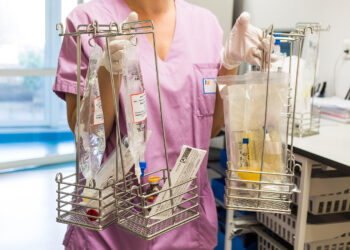[ad_1]
TOPLINE:
Risk for venous thromboembolism (VTE) during pregnancy increased significantly from 2009 to 2019, with an average annual percent change of 9.2% (95% CI, 5.7%-12.9%). Among 1,970,971 pregnancies analyzed, 5270 VTE events occurred, with 35.5% involving pulmonary embolism.
METHODOLOGY:
- Analysis included data from the 2008-2019 Merative MarketScan Commercial Claims and Encounters and Medicaid Multi-State databases in the United States, examining women aged 15-54 years with delivery hospitalization and continuous health care enrollment.
- Researchers identified 1,970,971 pregnancies to 1,691,290 women, requiring enrollment from 1 year before pregnancy through 60 days after delivery, excluding those with prior VTE history or anticoagulant use.
- VTE events were identified through diagnosis codes combined with pharmacy receipt of anticoagulants, including apixaban, dalteparin, enoxaparin, fondaparinux, unfractionated heparin, tinzaparin, and warfarin.
- Analysis utilized joinpoint regression to evaluate VTE risk trends, with trends reported as average annual percent change with 95% CIs.
TAKEAWAY:
- Risk for VTE increased significantly during the antenatal period (average percent change [APC], 8.2%; 95% CI, 3.7%-12.9%), delivery hospitalizations (APC, 12.2%; 95% CI, 7.4%-17.3%), and postpartum period (APC, 8.4%; 95% CI, 5.9%-11.0%).
- Obesity showed the highest adjusted relative risk [aRR] (1.91; 95% CI, 1.78-2.05), followed by chronic heart disease (aRR, 3.14; 95% CI, 2.93-3.37) and tobacco use (aRR, 1.61; 95% CI, 1.34-1.95).
- Individual analyses demonstrated significant increases for both pulmonary embolism (APC, 12.4%; 95% CI, 8.6%-16.4%) and deep vein thrombosis (APC, 7.6%; 95% CI, 4.0%-11.3%).
IN PRACTICE:
“Many common risk factors were associated with VTE including advanced maternal age and chronic conditions such as diabetes, chronic hypertension, and asthma. For delivery and postpartum VTE events, delivery factors such as cesarean delivery, transfusion, and postpartum hemorrhage were associated with increased risk,” wrote the authors of the study.
SOURCE:
The study was led by Olivia Kola, Rutgers New Jersey Medical School in Newark, and Alexander Friedman, MD, MPH, Columbia University College of Physicians and Surgeons in New York. It was published online in Obstetrics & Gynecology.
LIMITATIONS:
According to the authors, the study did not include clinical data, which could lead to misclassification and underascertainment. The researchers noted that practice patterns and changes in imaging over the study period could not be accounted for, making it difficult to determine if increased VTE risk was due to actual increases or more frequent imaging. Additionally, the study population, while large, was not designed to be nationally representative and may have selection bias, particularly regarding patients with Medicaid insurance who had limited eligibility before pregnancy.
DISCLOSURES:
Friedman received funding from the Eunice Kennedy Shriver National Institute of Child Health and Human Development (1RO1HD104943), though this funding was not used for this research. He also served on an advisory board for Biogen and Sage. Additional disclosures are noted in the original article.
This article was created using several editorial tools, including AI, as part of the process. Human editors reviewed this content before publication.
[ad_2]
Source link : https://www.medscape.com/viewarticle/maternal-venous-thromboembolism-risk-climbs-steadily-2025a10000bj?src=rss
Author :
Publish date : 2025-01-08 07:04:29
Copyright for syndicated content belongs to the linked Source.














